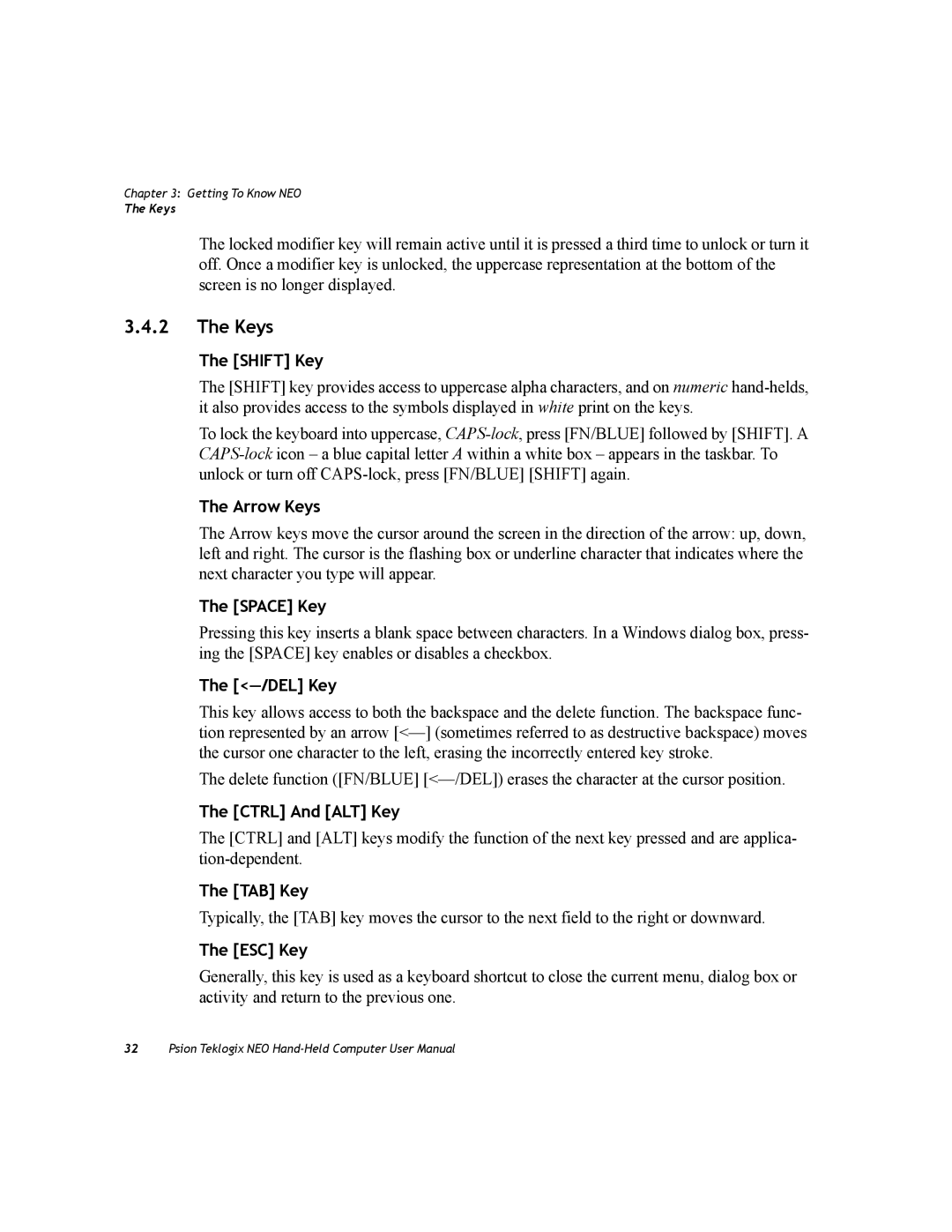Chapter 3: Getting To Know NEO
The Keys
The locked modifier key will remain active until it is pressed a third time to unlock or turn it off. Once a modifier key is unlocked, the uppercase representation at the bottom of the screen is no longer displayed.
3.4.2The Keys
The [SHIFT] Key
The [SHIFT] key provides access to uppercase alpha characters, and on numeric
To lock the keyboard into uppercase,
The Arrow Keys
The Arrow keys move the cursor around the screen in the direction of the arrow: up, down, left and right. The cursor is the flashing box or underline character that indicates where the next character you type will appear.
The [SPACE] Key
Pressing this key inserts a blank space between characters. In a Windows dialog box, press- ing the [SPACE] key enables or disables a checkbox.
The [<—/DEL] Key
This key allows access to both the backspace and the delete function. The backspace func- tion represented by an arrow
The delete function ([FN/BLUE]
The [CTRL] And [ALT] Key
The [CTRL] and [ALT] keys modify the function of the next key pressed and are applica-
The [TAB] Key
Typically, the [TAB] key moves the cursor to the next field to the right or downward.
The [ESC] Key
Generally, this key is used as a keyboard shortcut to close the current menu, dialog box or activity and return to the previous one.
32Psion Teklogix NEO
